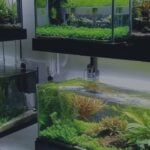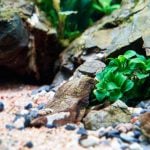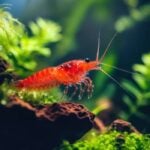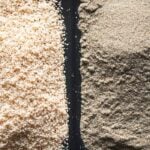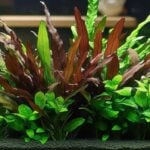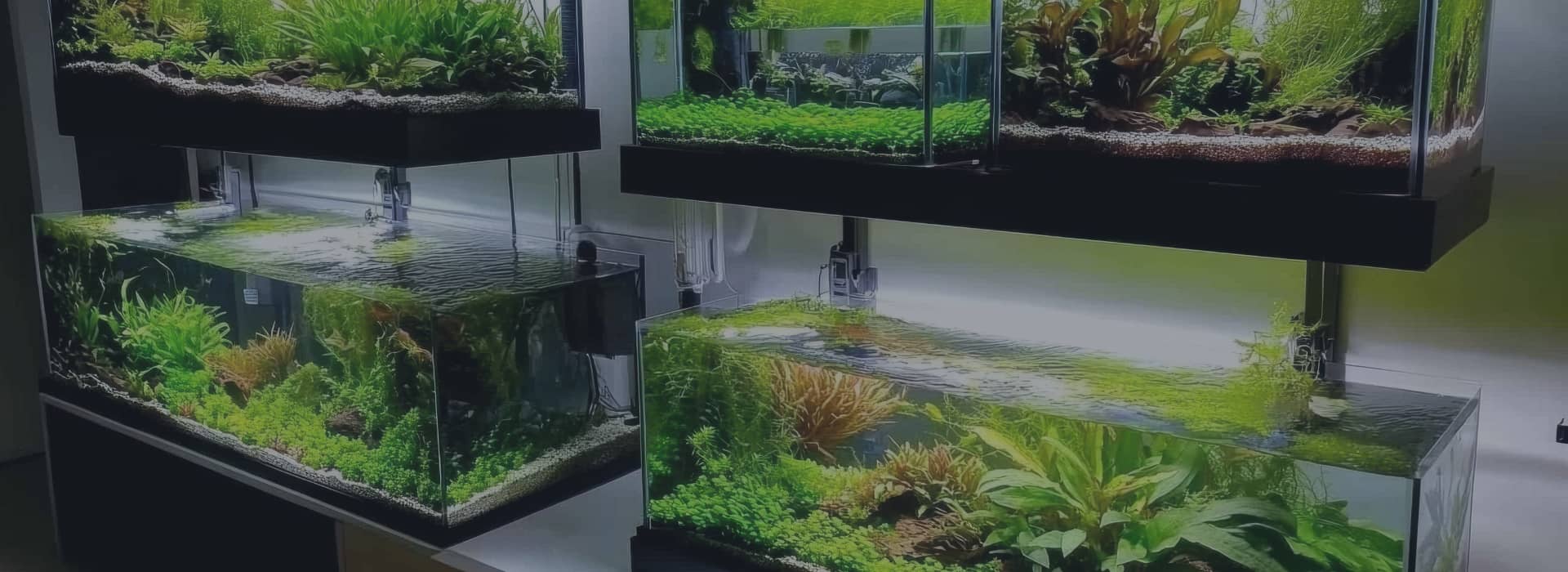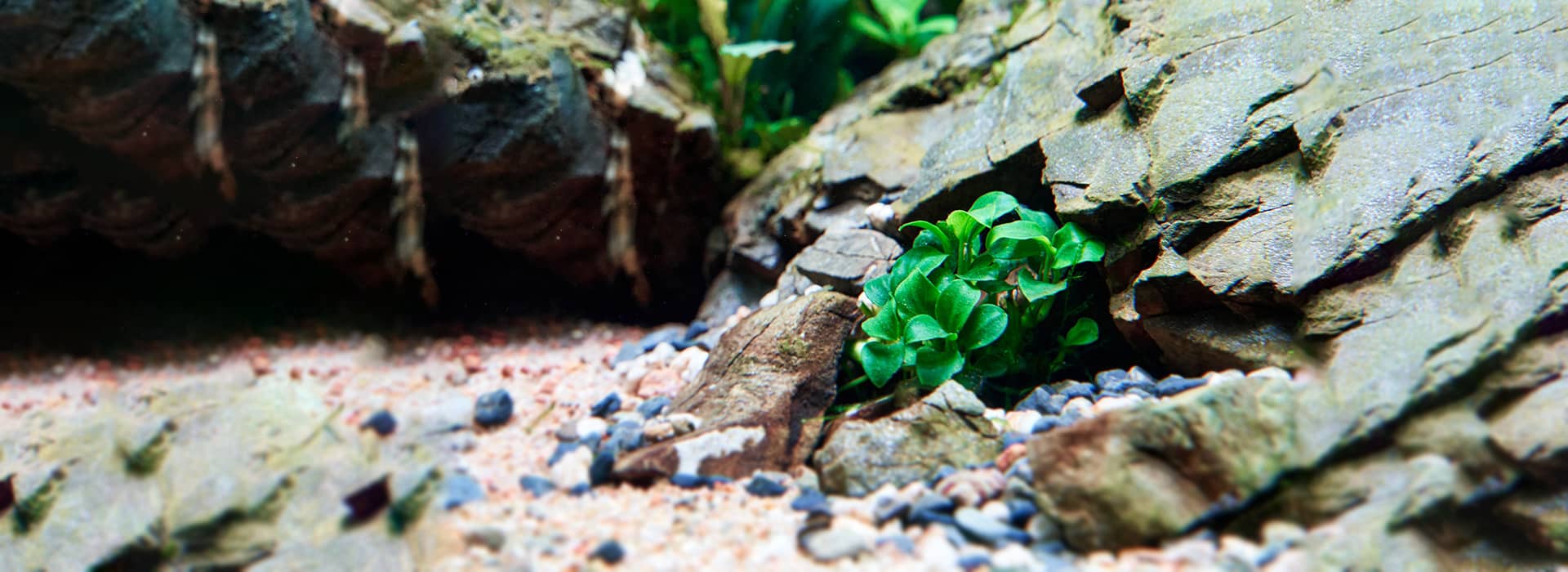Aquariums are wonderful additions to any home, providing a calming and relaxing environment. However, successfully keeping a healthy and thriving aquarium requires more than just setting up a tank and adding water and fish. One of the most important aspects of aquarium maintenance is ensuring that the water cycle is functioning correctly. A healthy aquarium water cycle is essential for the well-being of your fish and plants, and it can be achieved through proper filtration, regular water changes, and maintaining a balance of beneficial bacteria.
This might seem like a daunting thing to wrap your head around if you are a beginner. So, to make it as easy a process it can be, I’ll let you in on the best approach to both getting the water cycle started and maintaining it for the lifetime of the aquarium.
What Is The Nitrogen Cycle?
The nitrogen cycle is an important process that occurs in any healthy aquatic ecosystem to maintain the health and well-being of its inhabitants. In the aquarium, this cycle has to be kickstarted manually. Understanding the nitrogen cycle is essential for any aquarium hobbyist as it helps them to keep the aquarium water in the proper chemical balance to support the fish, plants, and other aquatic creatures.
Nitrogen is an essential nutrient for all living organisms, and it is a component of various biological molecules like proteins and DNA. The nitrogen cycle in the aquarium involves the transformation of different forms of nitrogen into other forms with the help of beneficial bacteria. The nitrogen cycle consists of three main stages: ammonia production, nitrite production, and nitrate production. Here is a closer look at each one of them.
Ammonia Stage
The first stage of the nitrogen cycle in an aquarium is ammonia production. Fish and other aquatic animals excrete waste in the form of compounds that form ammonia, which is highly toxic to fish and other aquatic organisms. The uneaten food and decaying plant matter also produce ammonia. If the ammonia concentration in the water becomes noticeable, it can cause ammonia toxicity in fish and other aquatic creatures, leading to stress, illness, and even death.
Nitrite Stage
The second stage of the nitrogen cycle is nitrite production. Beneficial bacteria called ammonia-oxidizing bacteria (AOB) can convert ammonia into nitrite, a less toxic compound. Nitrite is also dangerous to fish, but less so than ammonia. Nitrite can only be tolerated in trace amounts. Anything more and the fish will start dying just not as quickly as they would from ammonia poisoning.
Nitrate Stage
The third stage of the nitrogen cycle is nitrate production. Nitrate is the end product of the nitrogen cycle and is the least toxic form of nitrogen. It is produced by denitrifying bacteria, which convert nitrite into nitrate. Nitrate can be removed from the water by various means, including water changes and live plants.
I would like to caution you about denitrifying filter media that you might come across online or at some shade local fish stores. These are all scams and will not work.
Denitrifying filters do exist but they are only used in industrial applications and aren’t practical for home aquariums due to their complexity, size, and cost. Nitrate levels in the aquarium should be monitored regularly, as excessive nitrate can cause algae blooms and harm fish and other aquatic creatures.
Now that we have understood what the Nitrogen Cycle is all about, let us look at ways of kickstarting this process in a new aquarium.
The Key Parts Of The Aquarium That Will House The Beneficial Bacteria
As we just saw, most of the magic behind the nitrogen cycle is taken care of by colonies of beneficial bacteria. While these bacteria can live on any surface in the aquarium system, there are a few key locations that will house a majority of these bacteria and these include the following.
Filter media: The filter media is where most of the beneficial bacteria will reside. This is because the filter provides a lot of surface area for bacteria to grow on. The filter media can include materials such as sponge, ceramic rings, bio-balls, or other porous materials. It is important to have a good flow rate in the filter to ensure that water passes through the filter media effectively, allowing the bacteria to colonize and break down waste.
This is referred to as biological filtration and is one of the most important types of filtrations needed in an aquarium.
Substrate: The substrate is the material that lines the bottom of the aquarium. It can include things such as gravel, sand, or other materials that are porous enough to allow water to flow through. The substrate also provides a reasonably large surface area for bacteria to grow on and helps to create an environment that is conducive to bacterial growth.
Decorations: Decorations in the aquarium can also provide surfaces for beneficial bacteria to colonize. Rocks, wood, and other decorations can do this quite well while also helping to create hiding places for fish. Ensure that any decorations you add to the aquarium are safe for the fish and do not leach harmful substances into the water. Most decorations will only be able to provide a limited area for the bacteria to grow on. As such, you should never depend on decorations alone to establish a viable colony of beneficial bacteria.
The reason why I pinpointed these three parts of an aquarium setup is because these should never be replaced all at once. Whenever the need arises to change the filter media, substrate, or decorations, only half of these elements should be replaced at any given time. This will allow enough beneficial bacteria to remain and keep the nitrogen cycle going. You should then wait for at least 3-4 months before replacing the other half. This will give enough time for the bacteria to colonize the new filter media, decorations, or substrate.
Steps To Establish The Nitrogen Cycle In A New Aquarium
To put it simply, the nitrogen cycle is the process of converting toxic ammonia (NH3) into less harmful nitrite (NO2-) and ultimately into relatively harmless nitrate (NO3-). Here is a step-by-step guide on how to establish the nitrogen cycle in a new aquarium:
- Set up the aquarium
Before adding any fish or plants, set up the aquarium by cleaning it thoroughly and placing the substrate, decor, and equipment (filter, heater, air pump, etc.) in their proper positions. Fill the aquarium with dechlorinated water to the appropriate level, and let the water sit for 24 hours to allow the temperature to stabilize. - Add beneficial bacteria
Beneficial bacteria are essential for the establishment of the nitrogen cycle. You can add them in several ways, including using a bacterial starter culture, adding some substrate or filter media from an established aquarium, or using bottled bacteria supplements. Follow the instructions on the product label carefully to ensure you add the right amount of bacteria.
This step can be skipped if time isn’t of the essence. - Add a source of ammonia
Ammonia is the primary source of food for the beneficial bacteria that will convert it into nitrite and nitrate. Add a source of ammonia to the aquarium, such as fish food or pure ammonia.
In the past, this step could also be taken care of by adding a small number of hardy fish. However, I am strongly against using this method as it is cruel and inhumane. - Test the water
During the nitrogen cycle, it is essential to monitor the water parameters regularly to ensure the bacteria are thriving and the water quality is safe for the fish. Test the water for ammonia, nitrite, nitrate, pH, and temperature using a quality test kit. Test the water daily during the first week and then every few days after that. - Wait and watch
After adding the bacteria and ammonia source the nitrogen cycle will begin. The process can take anywhere from two to six weeks to complete, depending on various factors such as the size of the tank, type of filter media, ammonia source, and water temperature. During this time, it is very essential to be patient and not add fish or plants to the aquarium. - Water changes
During the cycling process, the ammonia and nitrite levels will spike. Perform partial water changes of 20-25% every few days to dilute the levels of ammonia and nitrite. Only use dechlorinated water that is the same temperature as the aquarium water. - Completion of the cycle
Once the ammonia and nitrite levels have dropped to zero, and only nitrate levels are present, the nitrogen cycle is complete. Do a final partial water change. Check the parameters once again. If the ammonia and nitrite levels are still zero, the aquarium is now ready for the addition of fish and plants. Continue to monitor the water parameters regularly and perform routine maintenance, such as water changes, to keep the aquarium healthy and stable.
Tips To Get The Nitrogen Cycle Established Faster
The process of the nitrogen cycle being established properly can sometimes take more than a month. This can put a real dampener on the excitement of getting a new tank. There are a few safe and effective ways to speed up this process.
It all comes down to the introduction of the beneficial bacteria. Just by adding a source of ammonia, a colony of these bacteria will get established on their own, but this can take nearly six weeks. These bacteria can also be artificially introduced to speed up the entire process considerably. Here are a few ways to kickstart the establishment of beneficial bacteria
- Use established filter media:
One of the easiest and most effective ways to jumpstart the nitrogen cycle in a new aquarium is to use established filter media from a mature aquarium. This can introduce a healthy population of beneficial bacteria into the new aquarium, which can begin to break down ammonia and nitrite right away. Simply transfer the filter media from the mature aquarium to the filter in the new aquarium, and allow the bacteria to colonize the different surfaces in the new tank. - Add live plants:
Live plants can help to establish the nitrogen cycle in a new aquarium by taking up excess nutrients and providing a surface area for beneficial bacteria to grow. Additionally, plants can help to reduce the levels of toxic ammonia and nitrite by utilizing these compounds for growth. Adding live plants to a new aquarium can be a bit more complicated than using established filter media, but it can still be a very effective way to jumpstart the nitrogen cycle. - Use bottled bacteria:
Another way to quickly establish the nitrogen cycle in a new aquarium is to use bottled bacteria products that contain live cultures of nitrifying bacteria. These products can be added directly to the aquarium to help introduce beneficial bacteria that will break down ammonia and nitrite. However, not all bottled bacteria products are created equal, and some may be more effective than others. Be sure to do your research and choose a reputable product from a trusted brand. - Seeding with substrate:
A new aquarium can be seeded with beneficial bacteria by adding a substrate from an established aquarium. This can help to introduce the necessary bacteria that will break down ammonia and nitrite, and jumpstart the nitrogen cycle in the new aquarium. To do this, simply add a small amount of substrate from an established aquarium to the new aquarium, and allow the bacteria to colonize the new environment.
How To Maintain the Nitrogen Cycle
The nitrogen cycle isn’t something that you can forget about once it is established. It needs to be sustained for as long as there are fish living in the tank. Thankfully, this isn’t a very complicated or laborious process. Here are some ways to maintain the nitrogen cycle in an aquarium:
- Regular water changes
- Adequate filtration
- Avoid overfeeding
- Test water regularly
Here is a closer look at each of them
Regular Water Changes
One of the fundamental ways in which a nitrogen cycle can be maintained is through regular water changes. As explained earlier, even in a properly established aquarium, the beneficial bacteria will keep producing nitrates. Even though nitrates are harmless in low concentrations (less than 20 ppm), it can become toxic when its concentration increases. Regularly doing a partial water change will keep the nitrate levels below these dangerous levels.
A partial water change will also help to remove excess nutrients and waste products that can overwhelm the beneficial bacteria and disrupt the balance of the ecosystem.
In my experience, a water change should be done at least once every two weeks, with the amount of water changed varying depending on the size of the aquarium and the number of fish and other aquatic inhabitants present. 20% to 25% is a good place to start.
Smaller aquariums will need more frequent water changes when compared to larger aquariums.
Adequate Filtration
The filtration system is where a majority of the beneficial bacteria will take up residence. For a large and stable colony of beneficial bacteria to be established, the filter should be large enough and the filter media used should have a large surface area. Ceramic balls, bio-balls, and highly porous sponge are all good ways to increase said surface area. The filter should also have a flow rate good enough to ensure that none of these surfaces dry out.
The filter should be reliable as too. It should not break down unexpectedly as that can also be catastrophic to the bacteria. Regularly monitor the filtration system to make sure everything is working smoothly. Also, never replace all the filter media at once. As I alluded to earlier, at any given time only replace up to half of the filter media and no more and keep a gap of at least 3 months till the next replacement.
Avoid Overfeeding
Fish food is a great source of nitrogen and overfeeding will cause an abundance nitrogen based compounds. This is not at all good for the nitrogen cycle. Ammonia will be produced at a rate which will be too much to handle. This will lead to the death of other organisms leading to more ammonia formation. If left unchecked, it can destroy the bacteria colony and the nitrogen cycle with it. Always feed just enough food that will be eaten in a minute. Any food that is left uneaten at this point should be promptly removed.
Test Water Regularly
Any disruption to the nitrogen cycle won’t become apparent immediately. Fish, especially the hardy ones, can continue to live for several days before suddenly dying at which point it is too late. To avoid this, keep testing the water at least on a weekly basis. Testing kits for ammonia, nitrite, and nitrates are readily available in fish stores. If the following requirements are met, it means that the nitrogen cycle is functioning properly.
Ammonia – 0 ppm
Nitrites – 0 ppm
Nitrates – less than 20-30 ppm
Live Plants Can Aid The Nitrogen Cycle
Live plants aren’t suitable for all aquariums but if you can add a few live plants to the tank, it will supplement the nitrogen cycle quite well. Plants need nitrogen-based compounds to grow. They mostly absorb nitrates for this. A tank with a reasonable number of healthy live plants won’t need water changes frequently. Some densely planted tanks with a small number of fish don’t need water changes at all. However, this is difficult to achieve for a beginner.
Even if you have a lot of healthy plants, keep testing the tank regularly and do a partial water change whenever the nitrate level starts getting close to the 20-30 ppm mark.
FAQ
What is the nitrogen cycle in aquariums?
The nitrogen cycle is the process by which beneficial bacteria convert toxic ammonia into nitrite and then into nitrate, which is less harmful to fish and other aquatic organisms.
Why is the nitrogen cycle important in aquariums?
The nitrogen cycle is important because it helps to maintain a healthy environment for fish and other aquatic organisms. Without it, ammonia and nitrite levels can build up and become toxic, which can harm or even kill the fish.
How does the nitrogen cycle work in aquariums?
The nitrogen cycle starts with the breakdown of fish waste and uneaten food, which produces ammonia. Beneficial bacteria then convert the ammonia into nitrite, which is also toxic. Another type of bacteria converts nitrite into nitrate, which is less toxic and can be removed by partial water changes.
How long does the nitrogen cycle take in aquariums?
The nitrogen cycle typically takes 4-6 weeks to establish in a new aquarium. During this time, monitor ammonia and nitrite levels and perform partial water changes as needed.
What can disrupt the nitrogen cycle in aquariums?
The nitrogen cycle can be disrupted by overfeeding, overstocking, adding too many fish at once, using strong medication or chemicals in the aquarium, and changing too much water at once.
How can you maintain the nitrogen cycle in aquariums?
To maintain the nitrogen cycle, perform regular partial water changes, avoid overfeeding and overstocking, and avoid using chemicals unless absolutely necessary.
Can you speed up the nitrogen cycle in aquariums?
You can speed up the nitrogen cycle in aquariums by adding a source of beneficial bacteria, such as used filter media from an established aquarium or adding a bacterial supplement.
How can you tell if the nitrogen cycle is working in your aquarium?
You can tell if the nitrogen cycle is working in your aquarium by monitoring ammonia and nitrite levels. If there is a spike, it means that the nitrogen cycle is no longer working as it should.
Conclusion
the nitrogen cycle is a crucial process in maintaining a healthy and thriving aquarium environment for fish and other aquatic organisms. Understanding the cycle and its workings can help you maintain the proper water parameters and avoid harmful spikes in ammonia and nitrite levels.
Doing all of this isn’t as complicated or difficult as it might appear initially. Establishing and maintaining the nitrogen cycle is fairly easy and is part of the reason why the fishkeeping hobby is so much fun. With a little bit of patience and attention to detail, you will become a pro in all things related to the aquarium water cycle in almost no time at all.
